All about cabbage butterflies

The cabbage butterfly is a dangerous enemy of vegetable crops and is well known to gardeners. The insect is found in almost all natural zones of our country, with the exception of the northern regions. If radical measures are not taken in time to destroy the pest, there is a high risk of being left without a crop.

Description
The cabbage butterfly (lat.Pieris brassicae), also known as the cabbage white, is a typical representative of the order of Lepidoptera, the family of white beetles, a genus of garden white beetles. The insect got its name because of a great love for juicy cabbage leaves, which form the basis of its diet. The cabbage has 2 front wings of a powdery white color with a black border in the corners and 2 rear, rounded-oval, with two anal veins. The reverse side of the wings in females has a greenish tint, in males it is yellowish.
Thanks to this color, the insect perfectly disguises itself and becomes almost invisible on the green leaves of vegetable crops.
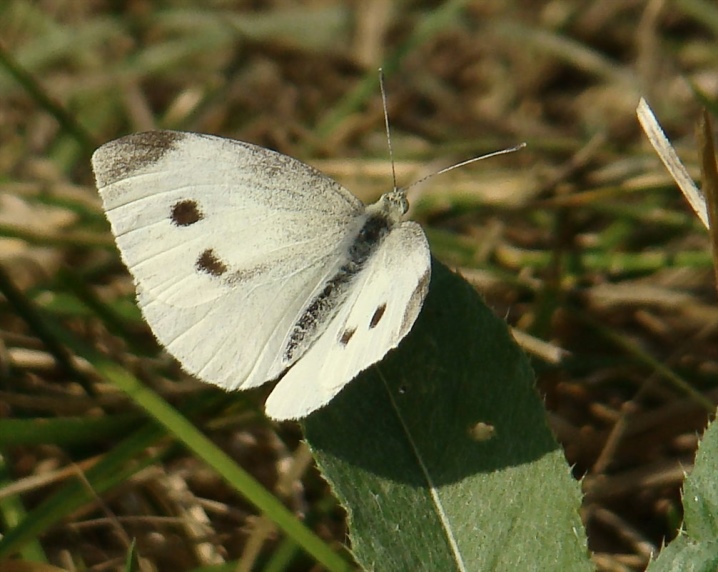
Males look slightly smaller than females and have less intense coloring on the wings. Cabbage is considered a rather large butterfly: the wingspan of an adult can reach 63 mm. The insect has a rounded head with naked eyes and long antennae, which end in a capitate club with a light apex. On the chest there are thick whitish-yellow hairs. Six legs with sharp claws help the cabbage plant tenaciously hold onto the leaves, however, due to their weakness, the insect almost does not know how to crawl.
The area of cabbage is very wide: due to the high tolerance of insects to the surrounding conditions, they can be found in Australia, Africa, Eurasia and Japan. As a habitat, butterflies choose vegetable gardens, flood meadows, forest glades and orchards, as well as city parks, squares and roadsides. Cabbage is diurnal and is especially active in sunny calm weather at a temperature of + 20-25 degrees. On a cloudy day, insects fly to tall grass and sit motionless on it with folded wings.
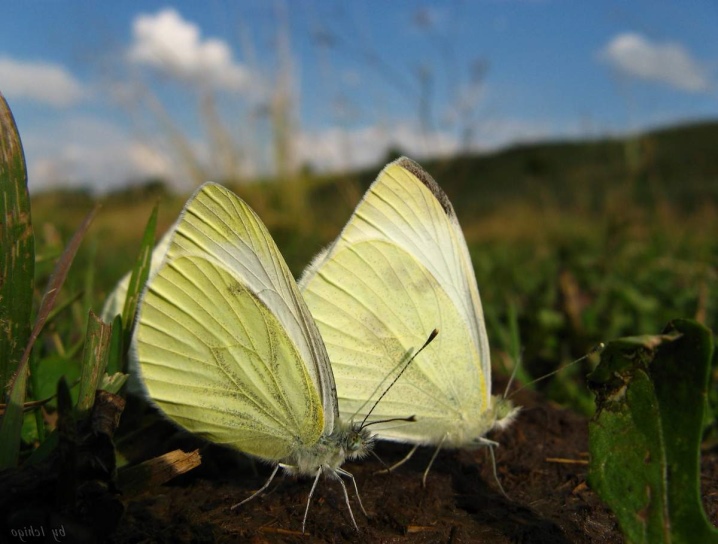
The life cycle of a cabbage butterfly consists of four stages.
- Active flight of cabbage butterflies in the southern regions it falls at the end of March, and in the middle lane - in May. Soon after it starts, the insects begin to mate. A characteristic feature of the cabbage is the predominance of a monogamous mating system, in which the female mates with only one male. Cases of polyandry also occur, but are not widespread. After mating, the cabbage lays up to 300 eggs, placing them on the underside of the leaf. The life span of a butterfly is short; on average, it lives no more than 30 days. The basis of her diet is the flower nectar of cornflowers, dandelions, alfalfa, seaweed, thistle and marjoram, which she sucks from flowers with her proboscis.
- White eggs have a pin-shaped vertical shape and are colored lemon yellow. After 3-16 days (depending on climatic conditions), larvae appear from them. A couple of hours before their birth, the eggs turn black and become transparent. At this moment, the larvae inside become clearly visible.
- Larvae grow quickly and develop into adult caterpillars. The caterpillar stage lasts from 2 to 5 weeks, during which the caterpillar has time to go through 5 stages of development and shed 4 times with an interval of 3-7 days.Newly hatched larvae have an ocher color that changes as they grow. The body of adults becomes yellow-green with a light stripe along the back and yellow stripes on the sides. Caterpillars of younger age categories are kept in a bunch and do not crawl away from their groups. They scrape off the pulp from the underside of the leaf, turning it into a skeleton. Having matured a little, the pests begin to creep in different directions and live one by one. With a change in lifestyle, the taste preferences of caterpillars also change: growing up, they begin to devour the upper side of the leaf, gnaw deep holes in cabbage heads, eat testes, flowers, buds, pods, and make long migrations in search of new food. The basis of the caterpillar's diet is the pulp of the leaves of white cabbage, Brussels sprouts and cauliflower, as well as the tops of radish, rapeseed, radish, turnip and turnip. The insect also feeds on the leaves of mustard, mignonette, garlic, capers and nasturtium. The body size of adult caterpillars reaches 6 cm.However, not all survive to an older age: many individuals die from attacks of parasites-parasites, which are natural enemies of the cabbage.
- Mature caterpillars go from plants to the ground, to trees, fences and stones. There they spin a silk thread, fasten with it on surfaces and begin to pupate. Pupae look like an angular cocoon colored yellow-green with dark dots. In this stage, the insect stays from 10 to 15 days, after which it turns into a butterfly or remains to winter. In spring, butterflies emerge from the pupae, and the life cycle repeats.
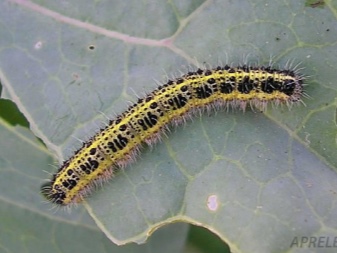
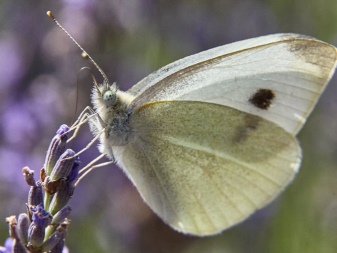
Cabbage plants reproduce very actively. In the southern regions, 3 generations of cabbage grows in one season, in middle and temperate latitudes - 2. The life cycle of the first generation of insects falls on April-May, the last generation can exist until October.
The second generation is considered the most numerous, which is born in late July - early August, depending on the climate of the region.
Reasons for the appearance
The reason for the appearance of a cabbage butterfly on a personal plot is the presence of a good food base in the absence of preventive measures and natural enemies. If there are large plantations of cabbage, radish, radish, horseradish or mustard in the garden, the likelihood of the arrival of caterpillars is quite high. Another reason for the appearance of pests is a population explosion - a fairly frequent phenomenon in nature, which is cyclical and happens every few years. During such periods, there is a very active reproduction of insects, which requires drastic measures to contain. In such cases, it is appropriate to use chemical methods of destroying pests, otherwise they will cause irreparable harm to plantations.
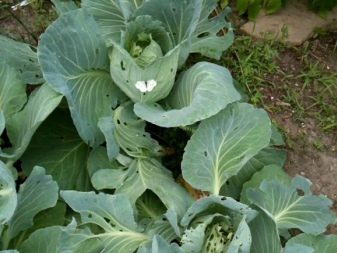
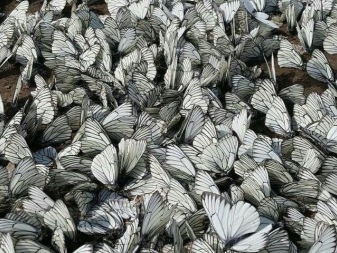
What harm does it do?
Cabbage caterpillars cause great damage to gardeners. They mercilessly gnaw at the tops and literally skeletonize cabbage leaves, leaving only large veins and eating all the pulp of the leaf. Besides, caterpillars are capable of secreting a poisonous substance that irritates the skin of the hands, and poultry that eats these insects can be poisoned and die.
Pest excrement accumulates between cabbage leaves and attracts many parasites, which worsen the already poor condition of the green mass of plants.
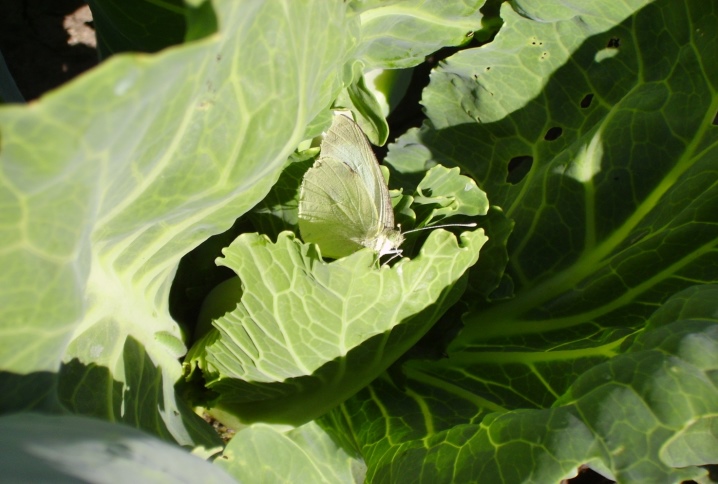
How to process cabbage?
At the beginning of summer, it is necessary to closely monitor the state of vegetable crops and try not to miss the appearance of cabbage. The presence of a pest can be determined by the bright lemon color of the egg-laying.
If eggs are found, urgent control measures must be taken, otherwise there is a risk of losing the crop.
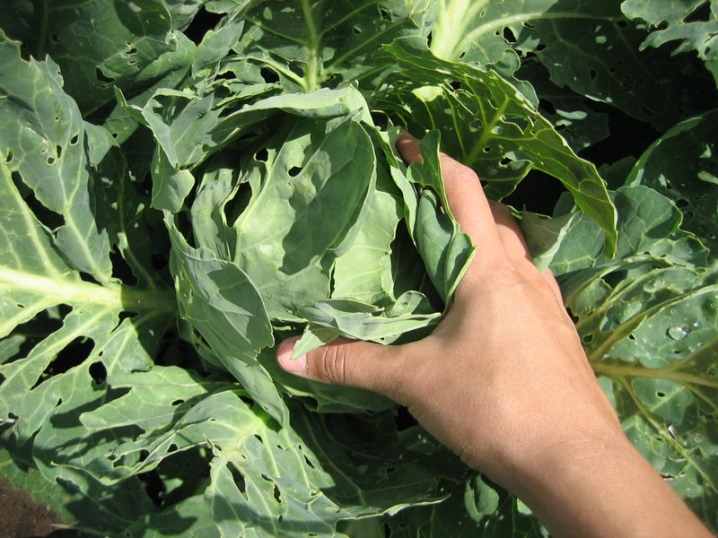
You can get rid of insects with the help of chemical and biological preparations, mechanical methods and folk remedies.
Mechanical methods
When a small number of pests appear in the country, a number of simple measures must be taken.
- Setting sweet traps. For this, thick sugar syrup is boiled, brewer's yeast is added to it, no more than 20% of the total volume, and poured into shallow plates. Plates are placed between cabbage and cruciferous beds. Butterflies begin to flock to the aroma, stick to the syrup and die in the sweet mass.
- On clear, warm days during an active flight, you can cover the beds with a mosquito netwhich will prevent insects from laying eggs.
- If a small number of eggs still appear, then they are collected by hand, scalded with boiling water and disposed of. Ovipositions are usually located on the underside of the leaves, so it will be easy to spot them. Small lumps resembling cotton wool are often present next to cabbage eggs. You do not need to collect them, as these are the eggs of parasites-riders - the worst enemies of caterpillars. Riders quickly destroy cabbage larvae without causing any harm to vegetable crops.

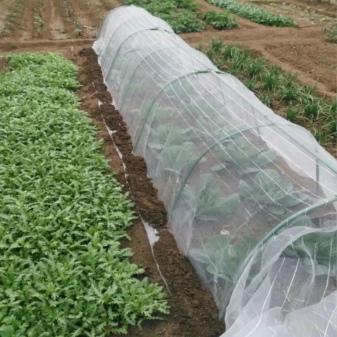
Biological methods
An effective biological method is to attract to the site the natural enemies of the cabbage - parasitic ovarian parasites - small bellies and trichograms.
- Trichograms are very small insects less than 1 mm in size. They lay their eggs in fresh cabbage white eggs, causing their death. Adult trichograms are released on a vegetable plantation during the egg-laying period of cabbage at the rate of 50,000 individuals per hectare. In addition to whites, trichograms are able to fight more than 70 more species of insect pests.
- Small belly is a small insect that lays eggs directly in the white hare's caterpillars. He flies up to his victim, sits on her body and, with the help of a sharp ovipositor proboscis, drives 15-20 microscopic eggs under her skin. Soon, larvae appear from them, which begin to grow rapidly, feeding on the fat of the caterpillars. Before pupation, they crawl out of the body of the victim, causing its death. With the help of a small belly, you can destroy up to 90% of the white hare's caterpillars.
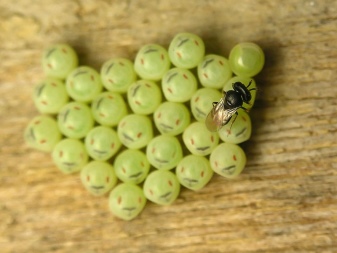
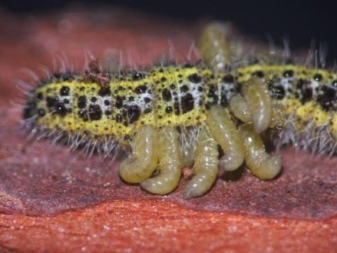
Biologicals
If mechanical methods did not help, and larvae appeared from the eggs, you can use biological preparations. They do not pose a danger to future fruits and can be used at any stage of the growing season. Good results are obtained by using "Fitoverm", "Aktofit", "Lepidocid", "Vermicid" and "Bitoxibacillin".
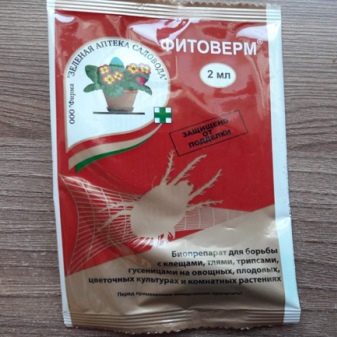
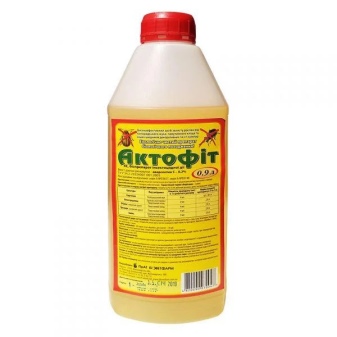
Chemicals
With a large accumulation of caterpillars on the site, chemical agents are used. It is recommended to start with weaker formulations, gradually moving to stronger ones. It is possible to poison caterpillars with the help of chemistry only in case of severe infection of plantations, when other methods no longer help. Processing is best done in dry, calm weather, preferably in the morning. Before spraying, it is necessary to protect the eyes, skin and respiratory organs with personal protective equipment, as well as remove animals and children from the site.
The modern chemical market offers a wide range of insect pest control products. Good results are obtained by treating plants with Iskra, Kinmiks, Karate, Karbofos and Aktellik.
However, it should be remembered that chemistry can be used only in the first phase of the growing season, before the start of fruit formation. Otherwise, toxins will penetrate their structure and make them unfit for human consumption.
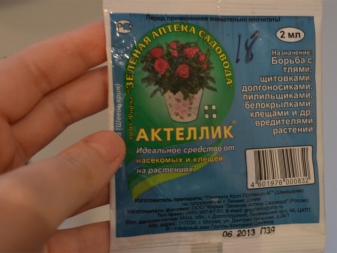
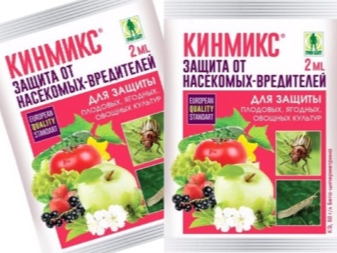
Folk remedies
With a slight defeat of vegetable crops with a cabbage butterfly, you can use improvised means. They do not have a negative effect on plants and soil, and can be used throughout the growing season. Below are the most effective folk methods, the use of which will help get rid of pests.
- You can scare away insects from vegetable crops with ordinary valerian. To do this, add a bottle of valerian to 3 liters of warm water, sprinkle the bushes with the resulting solution.Caterpillars are afraid of the tart smell of valerian and quickly leave the plants. By the way, butterflies also do not tolerate it and do not lay eggs on processed sheets.
- Infusion of coniferous needles is the perfect deterrent. It is prepared as follows: 200 g of pine needles are placed in an enamel pan, pour 2 liters of boiling water and insist for 7 days. Then the infusion is filtered, poured into a 10-liter bucket with water and the culture is treated.
- Herbal infusion for the destruction of caterpillars, whites are prepared from yarrow, wormwood and burdock leaves. The herbs are placed in equal parts in a 10-liter bucket, filling it 1/3 full. The mixture of herbs is poured with boiling water and left to infuse for 2 days. Then the infusion is filtered and the bushes are sprayed.
- Ash solution helps not only get rid of pests, but also acts as a fertilizer. For its preparation, half a kilogram of wood ash is poured with 10 liters of hot water and insisted for a day. Then the liquid is filtered, 2 tablespoons of liquid laundry soap are added and the plants are sprayed. You can add a couple of liters of water to the ash residue, mix well, then pour over the cabbage.
- You can spray the cabbage with mustard broth. To do this, dissolve 100 g of mustard powder in a bucket of hot water, leave for two days and process the culture.
- Dry tobacco dust or baking soda can be sprayed onto damaged leaves. Caterpillars cannot stand the smell of these substances and quickly go to other places. The procedure cannot be carried out before the rain, since dry compounds are quickly washed off to the ground and do not have time to provide the desired effect.
- You can also catch cabbage butterflies with adhesive tapes. To do this, wooden stakes are driven into the ground between the beds and a tape is hung on them. If there are bushes, fence or trees nearby, you can hang the tape on them.
- An infusion of potato tops is prepared as follows: 1 kg of tops is poured with a bucket of boiling water and left for 4 hours to infuse. Then the infusion is filtered, a couple of tablespoons of liquid laundry soap is added, after which the bushes are sprayed with this agent.
- If nothing is at hand at all, then you can prepare a saline solution. To do this, dissolve 2 tablespoons of salt with a slide in 10 liters of water and irrigate the greens. Instead of salt, you can use ammonia by stirring 50 ml of ammonia in a bucket of water.
- Burdock leaves thoroughly grind, fill the bucket with them by 1/3, add warm water to the top and leave for 4 days. Then the infusion is filtered and the cabbage is irrigated.
- Wormwood decoction helps well. To prepare it, 1 kg of herbs is boiled in 2 liters of water for 20 minutes, after which it is cooled, filtered, the resulting broth is poured into a bucket of water and the foliage is irrigated.
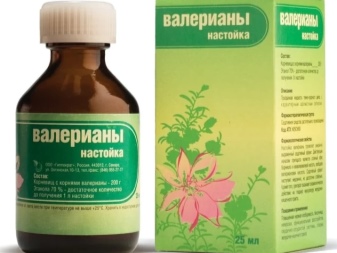
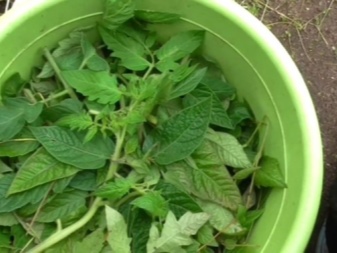

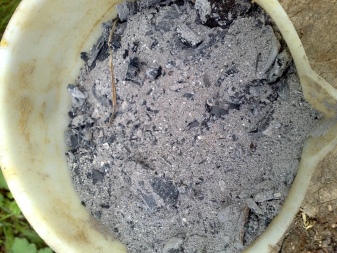
The processing of vegetable crops with folk remedies can be performed once a week throughout the season.
Prophylaxis
In order to maximally protect vegetable crops from the cabbage butterfly, it is necessary to take a number of preventive measures. Below are the main methods of protection against a pest, which will prevent its appearance on the site.
- Regular weeding and immediate disposal will help protect plants from insect infestations. This is because many types of weeds belong to the cruciferous family and attract whites. Particular attention should be paid to the field barnacle, the rape and the shepherd's bag.
- Removing pupae from fences and any wooden supportslocated near the beds, will not give them the opportunity to overwinter and turn into butterflies. Flushing is carried out using a garden hose with a high pressure of water.
- Observance of the correct neighborhood will not allow butterflies to take a liking to cabbage. To do this, mint, marigolds, valerian and lemon balm are planted between the cabbage rows. Their smell scares away insects and prevents them from laying eggs. You can plant carrots and dill nearby - although these crops do not smell, they attract natural enemies of the white woman.It is better to plant turnips, radishes and radishes away from each other and from cabbage rows.
- Lime treatment nearby trees will not allow pupae to hide in the bark and overwinter.
- In the autumn, after the entire cabbage crop has been harvested, the site, on which it grew, or well dug up, or burned out. In the first case, pupae hiding in the ground will find themselves on the surface and freeze. In the second, they will die from the high temperature.
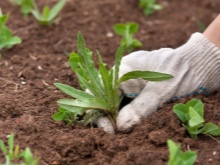
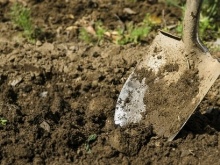
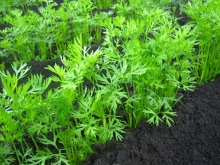
Plants of the cruciferous family need to be planted in new locations every year. This will make it possible to save them from the invasion of the cabbage butterfly and will help maintain the correct crop rotation.













The comment was sent successfully.